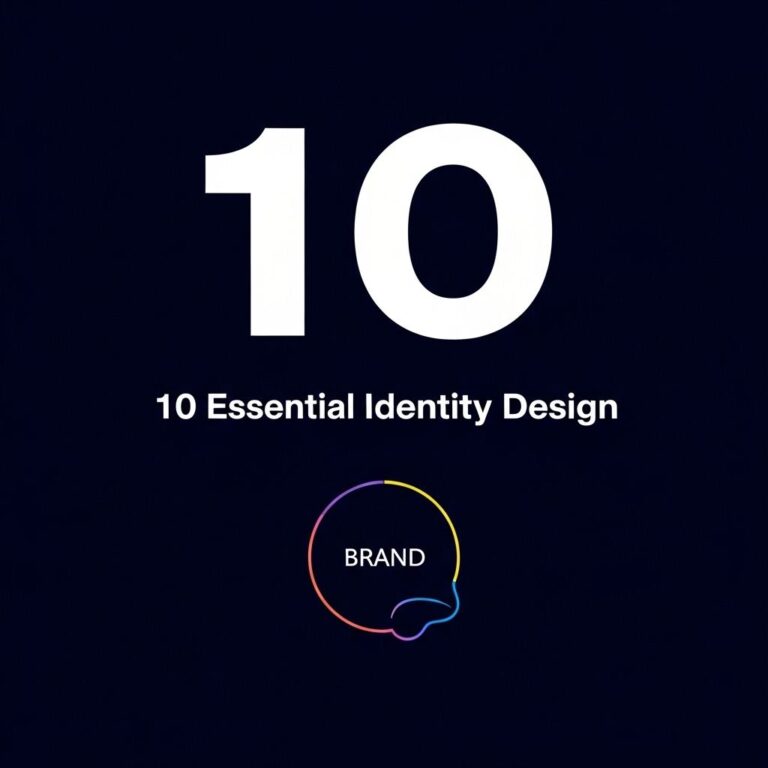In today’s highly competitive market, establishing a strong brand identity is crucial for businesses that want to stand out and resonate with their target audience. A well-defined brand identity not only facilitates customer recognition but also builds loyalty and influences purchasing behavior. Here, we explore five powerful steps to achieve brand identity success, each packed with actionable insights and strategic approaches.
Table of Contents
Understanding Brand Identity
Before diving into the steps, it’s essential to grasp what brand identity encompasses. Brand identity is the visible elements of a brand, such as its logo, color palette, typography, and overall design. However, it goes deeper to include the brand’s values, mission, and the emotional response it elicits from customers. When effectively crafted, brand identity serves as a foundation for your marketing efforts and customer engagement.
1. Defining Your Brand Core
Articulate Your Mission and Vision
To create a compelling brand identity, start by defining your brand’s core. This involves articulating your mission and vision. Here’s how to do it:
- Mission Statement: What does your brand stand for? Clearly define the purpose of your business.
- Vision Statement: Where do you see your brand in the future? This should reflect your long-term aspirations.
Identify Your Core Values
Values guide your brand’s actions and decisions. Consider the following:
- What principles are non-negotiable for your brand?
- How do these values align with the expectations of your target audience?
2. Conducting Market Research
Analyzing Your Target Audience
Understanding your target audience is critical to shaping your brand identity. Conduct market research to gather data on:
- Demographics (age, gender, income, location)
- Psychographics (interests, lifestyle, values)
- Buying behaviors (how and why they make purchasing decisions)
Analyzing Competitors
Evaluating your competitors provides insights into what works and what doesn’t in your industry. Create a competitive analysis table that includes:
| Competitor | Strengths | Weaknesses | Brand Positioning |
|---|---|---|---|
| Competitor A | Established brand, Wide reach | High prices | Luxury segment |
| Competitor B | Innovative products | Poor customer service | Tech-forward |
| Competitor C | Strong community engagement | Niche market | Local focus |
3. Crafting a Distinct Visual Identity
Logo Design
Your logo is often the first impression customers will have of your brand. It should be:
- Memorable: Easy to recognize and recall.
- Versatile: Adaptable to different mediums and sizes.
- Timeless: Avoid trends that may quickly become outdated.
Selecting Brand Colors
Color plays a pivotal role in brand recognition. Consider the psychological effects of colors:
- Red: Excitement, passion
- Blue: Trust, dependability
- Green: Growth, health
- Yellow: Optimism, clarity
Choosing Typography
The right typography reflects your brand’s personality. Elements to consider include:
- Readability: Ensure text is easy to read across all devices.
- Style: Choose fonts that align with your brand voice, whether modern, classic, or playful.
4. Building a Consistent Brand Voice
Defining Tone and Style
Your brand voice is how you communicate with your audience. To establish a consistent voice, think about:
- Formality: Is your brand casual or formal?
- Emotion: What emotions do you want to evoke?
- Language: Are you using industry jargon or straightforward language?
Implementing Brand Guidelines
Create comprehensive brand guidelines to maintain consistency across various platforms. Include:
- Logo usage rules
- Color palette specifications
- Typography standards
- Examples of dos and don’ts
5. Engaging with Your Audience
Utilizing Social Media
Social media platforms are powerful tools for brand engagement. Strategies include:
- Creating shareable content that resonates with your audience.
- Interacting with followers to foster community.
- Utilizing advertisements to boost visibility.
Collecting Feedback
Always seek feedback to refine your brand identity. This can be achieved through:
- Surveys and polls online
- Customer reviews and testimonials
- Engagement metrics on social media
Conclusion
Achieving brand identity success isn’t an overnight endeavor; it requires thoughtful strategy and consistent effort. By defining your brand core, conducting thorough market research, crafting a distinct visual identity, building a consistent brand voice, and actively engaging with your audience, you can build a strong foundation for your brand that resonates and endures. Remember, your brand is more than just a logo or a product—it’s an experience that you create for your customers. Invest the time and resources to develop a brand identity that reflects your values, connects with your audience, and stands the test of time.
FAQ
What are the key elements of a strong brand identity?
A strong brand identity includes a unique logo, consistent color palette, typography, tone of voice, and a clear mission statement.
How can I define my brand’s target audience?
Define your brand’s target audience by researching demographics, understanding their needs, and analyzing their behavior to tailor your messaging effectively.
Why is consistency important in brand identity?
Consistency builds trust and recognition; it ensures that your audience associates your visual and verbal messages with your brand across all platforms.
What role does storytelling play in brand identity?
Storytelling helps connect emotionally with your audience, making your brand more relatable and memorable, which enhances brand loyalty.
How often should I evaluate my brand identity?
You should evaluate your brand identity regularly, ideally every 1-2 years, or whenever you notice shifts in your market or audience preferences.









